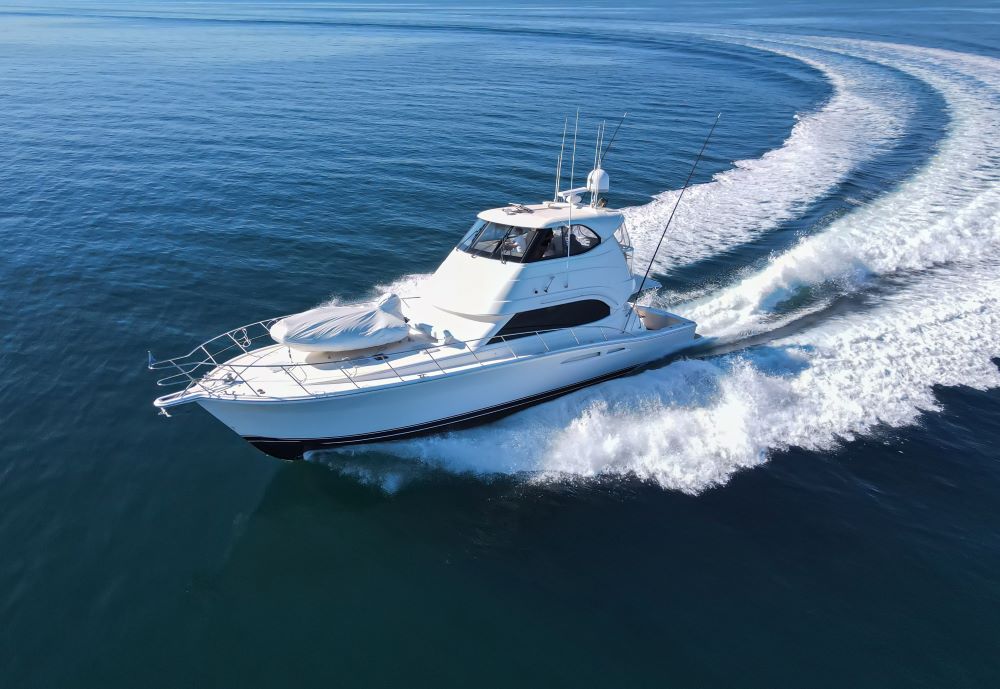
How can boat operators avoid causing damage with their wake and wash?
The ‘wake’ is the trail of waves caused by a boat as it moves through the water. The ‘wash’ (also called whirlpool or eddy) is the circular churning of water created by the boat’s back propeller. Both phenomena can cause environmental damage and endanger other boats. It is important to try to minimize the impact of your boat’s wake and wash.
The following best practices will help you to manage the negative impact of your wake and wash.
How to avoid damage caused by wake and wash
Reducing your boat’s ‘drag’ – the resistance caused by your boat as it moves through the water – will reduce the size of its wake and wash. By taking action and adjusting several factors, it is possible to avoid the damage that your wake and wash might cause. To begin, always be sure that you have the necessary boating safety equipment.
1. Use efficient engines and propellers
Installing efficient boat motors and propellers is one way to reduce the drag of your boat. Less drag translates into less wake and wash.
The lower the resistance, the less power is required to propel the boat, which also saves energy and reduces greenhouse gas emissions.
Types of engines and propellers that reduce wake and wash
Different types of engines and propellers have different potential impacts on your boat’s wake and wash.
- Internal combustion engines (gasoline and diesel engines): These are the most commonly used engines in recreational boats. They can be effective in reducing wake and wash, but they produce a significant amount of pollution. Please remember to clean your boat’s fuel tank.
- Electric motors: These do not emit greenhouse gases and are fairly quiet. However, they rely on heavy batteries and are not adaptable to all types of boats.
- Variable-pitch propellers: Because they are adjustable, these allow you to make the necessary changes to manage the wake and wash of your boat.
- Fixed-pitch propellers: Their fixed shape can be effective in reducing drag, depending on the speed of rotation.
It is important to note that the efficiency of a motor and propeller also depends on the shape and size of the boat. We recommend consulting a boating safety expert to help you select appropriate equipment.
2. Navigate at appropriate speeds
Operating your boat at appropriate speeds will limit the quantity of whirlpools and waves the boat generates. The faster the boat goes, the larger the wake and wash it will create.
In Canada, recommended speed limits vary within different types of boating areas. In many provinces, boaters are limited to a speed of 10 km/h within 30 metres (98 ft. 5 in.) of the shoreline.
Furthermore, boating at too high a speed in certain areas can cause environmental damage and endanger other boats and swimmers. It is important to follow speed limits both to protect the environment and to minimize your risk of collision.
3. Avoid sensitive habitats and respect the environment
By learning to avoid sensitive wildlife habitats, you help protect marine ecosystems and the species that live there. Fish feeding, breeding and protected areas are particularly vulnerable to the impacts of human activities like shipping.
A boat’s wash and wake can disrupt local species’ behaviors and cause physical damage to ecosystems.
How to identify and avoid sensitive wildlife habitats
There are several ways to enjoy boating while remaining respectful of the environment.
First, use a nautical chart to identify sensitive habitats and places where boating is prohibited. Navigation systems can also be equipped with mapping functions that indicate sensitive wildlife habitats.
You can rely on marine buoys and markers.
There are also smartphone apps that can show you exactly where not to go with your boat so that sensitive habitats remain intact.
Boat safely with the National Boating Safety School
It is important for boaters to control their speed to prevent damage or injury caused by a boat’s wash and wake. Note that speed limits are not always obvious and it is important to remain vigilant and to do all you can to reduce your impact on the marine environment.
If you do not have your Canadian boating license, start preparing now. You can even take your boating exam online with the National Boating Safety School. Learn all about boat safety and enjoy boating responsibly!

